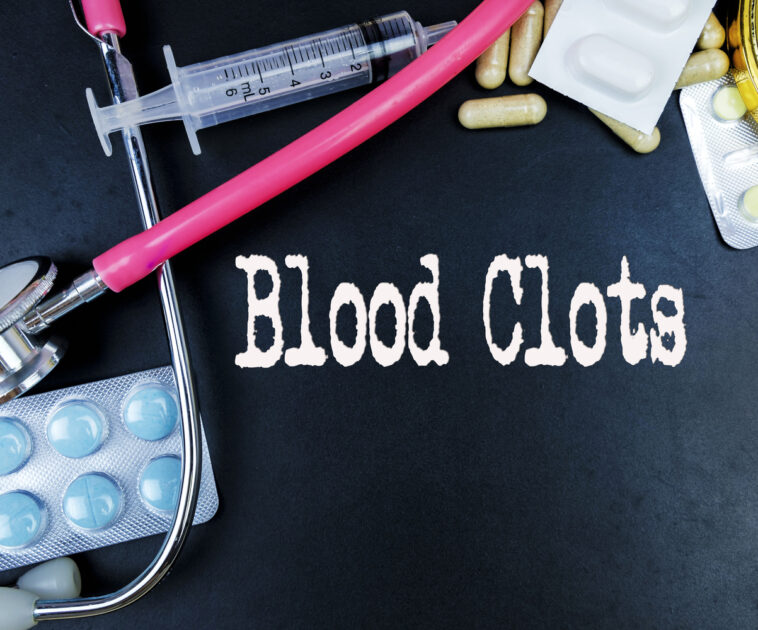Blood clots, also known as a thrombus, refer to coagulated or clotted blood. Blood clots appear as gel-like clumps of blood on top of an open wound or in the veins or arteries. Clotting of blood is beneficial when clots are formed after an injury. Such clots form a scab on the skin, which helps the wound to heal faster. However, blood clots that occur inside the veins or arteries can be a cause of concern, often resulting in life-threatening conditions; this condition is referred to as thrombosis. Clotted blood inside the veins or arteries blocks the flow of blood to vital organs like the lungs or brain.
Causes of blood clots
Blood clots are formed when platelets and plasma proteins thicken to form a semisolid mass. An external injury is usually the trigger for this process. However, sometimes clotting occurs inside blood vessels without an obvious injury. These clots travel through the blood vessels to various parts of the body and can cause many complications.
Complications caused by blood clots
Hypercoagulability is a medical condition in which there is an abnormal increase in the formation of blood clots throughout the body. There are many risk factors that contribute to hypercoagulability, such as atrial fibrillation, cancer and cancer treatments, obesity, genetic disorders, diabetes, reaction to certain medicines, and smoking. Another complication of unwanted blood clotting is deep vein thrombosis (DVT). In this condition, clots are usually formed in the veins of the legs. Pulmonary embolism is a condition where the deep vein clot breaks off and travels through the bloodstream blocking blood flow to the lungs. Other medical complications of blood clots include stroke, kidney failure, heart attack, and pregnancy-related issues.
Biological mechanism of clotting
The process of blood clotting is brought about by a series of chemical interactions. The lifecycle of blood clots is described below:
Formation of platelet plug: The damaged blood vessels trigger the release of platelets that stick to the walls and to each other, thereby forming a plug at the site of the wound to stop bleeding. Platelets release chemicals that attract more platelets.
Progression of the clot: The protein component of the blood is the clotting factor that triggers a chain reaction. This reaction ends with the dissolved substance in blood turning into long fibrin that entangles with the platelets to create a net that traps more platelets. This process renders the clot more tough and durable.
Arresting the growth of the clot: Other protein components offset the extra clotting proteins, which prevent spreading of the clot beyond the wound.
Breakdown of the clot: Once the damaged tissue starts healing, the clot is no longer needed. At this stage, the tough fibrin strands dissolve and the platelets are taken back into the bloodstream.
Symptoms of blood clots
The signs or symptoms of a blood clot depend on its location in the body. Clots present in the arteries cause moderate to severe pain that progresses quickly. When clots are present in the veins, the pain experienced is much milder but increases in severity as the day goes on.
Other symptoms of blood clots include tingling sensations, warmth, tenderness, and swelling. More specific symptoms of blood clots are based on their location; for instance, a clot in the artery that supplies blood to the brain causes neurological symptoms or paralysis. A clot in the veins present in the legs may result in a visible swelling of that leg. A blood clot in the coronary artery can give rise to symptoms of a heart attack.
Prescription medication is the primary treatment for blood clots. Apart from medication, lifestyle changes can also help in the prevention of blood clots. Routine exercise and maintaining a healthy body weight are recommended for preventing blood clots.




















